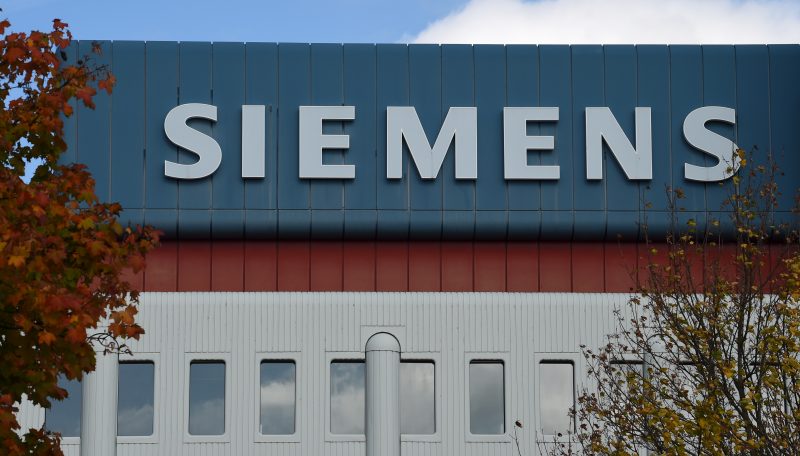Investors hail Siemens’ steady profits and energy spinoff plans
Siemens plans to spin off its struggling gas and power unit to prepare it for a potential stock market listing next year (Christof STACHE)
Berlin (AFP) – Shares in German industrial conglomerate Siemens jumped Wednesday, after the group reported steady profits in the second quarter and announced the spinoff of its historic power and gas unit a day before.
The Munich-based group’s stock added 4.3 percent to trade at 106.90 euros ($119.70) around 11:45 am in Frankfurt (0945 GMT), topping the DAX index of blue-chip German shares.
Like other once-sprawling German conglomerates such as Thyssenkrupp, Bayer or Continental, Siemens is slimming down via successive spinoffs and flotations of units that no longer fit into its leaders’ vision.
The conventional energy division with its oil and gas, gas turbines, power transmission and related services businesses will join wind turbine subsidiary Gamesa, medical devices arm Healthineers and lightbulb unit Osram on the stock market by September 2020, bosses said.
Shareholders have been pressuring executives for months to find a new path for the business, which has already announced some 7,000 job cuts as well as site closures in Germany.
Siemens plans to keep a blocking minority in the new entity once it is listed, which will allow the firm to retain control while banishing power and gas’ detailed earnings from its financial reporting.
“We don’t need the excitement of complexity every quarter, the excitement about our products is enough,” quipped chief executive Joe Kaeser at a press conference.
– Solid second quarter –
After Tuesday night’s announcement of the spinoff, Wednesday morning brought financial data showing Siemens booked steady performance in the second quarter, including in power and gas.
Net profits at the group fell five percent year-on-year, to 1.9 billion euros between January and March.
Meanwhile revenues were up two percent adjusting for currency effects, at 20.9 billion euros.
There was a rare success story at the fossil fuels business, which has struggled with profitability in recent years.
It lifted its operating margin to 5.6 percent in the second quarter — still short of the group’s 11 to 15 percent target — on adjusted revenues down six percent at 2.8 billion euros.
And the order book remained stable at 3.3 billion euros thanks to big contracts from countries including Egypt and Iraq.
German media reported that the division’s flotation could open the way for it to merge with a rival like General Electric, Mitsubishi or Italy’s Ansaldo.
Meanwhile the mothership will “enter into a new era to become an even stronger and more focused Siemens,” CEO Kaeser said.
– Digital future –
Products remaining in-house at the group will include above all digital or digitally-enhanced ones, including factory automation, intelligent infrastructure, construction services and energy management.
There is less clarity about the future of the rail division, which in February had its planned merger with France’s Alstom rejected by the European Commission.
“We want to grow more, if there is an opportunity to stay in that business, we should take it,” Kaeser said Wednesday.
Looking ahead to its full 2018-19 year, Siemens remained cautiously confident, aiming for “moderate growth in revenue” and a profit margin of 11 to 12 percent in its core industrial businesses, adjusting for portfolio and currency effects.
Disclaimer: Validity of the above story is for 7 Days from original date of publishing. Source: AFP.


